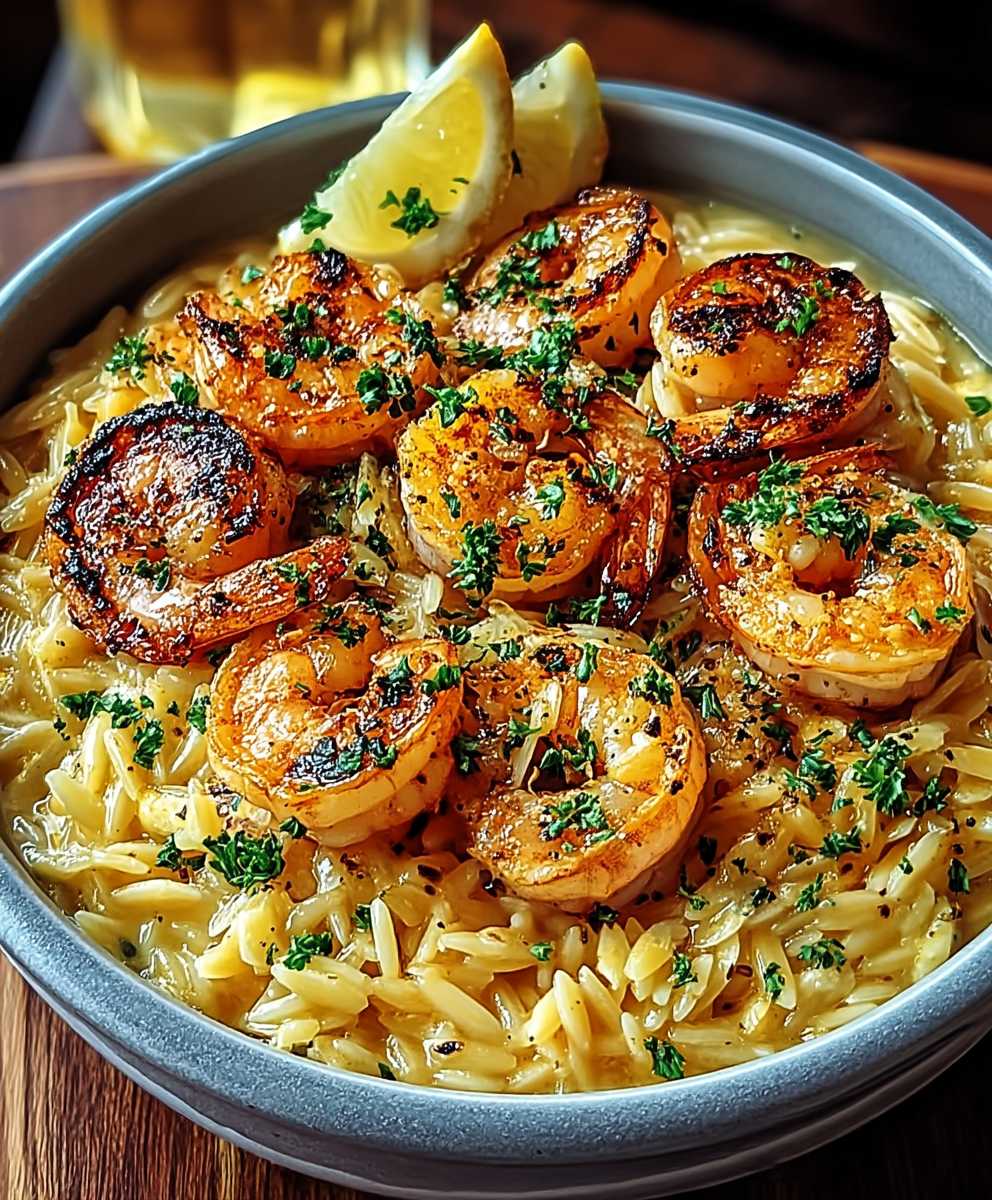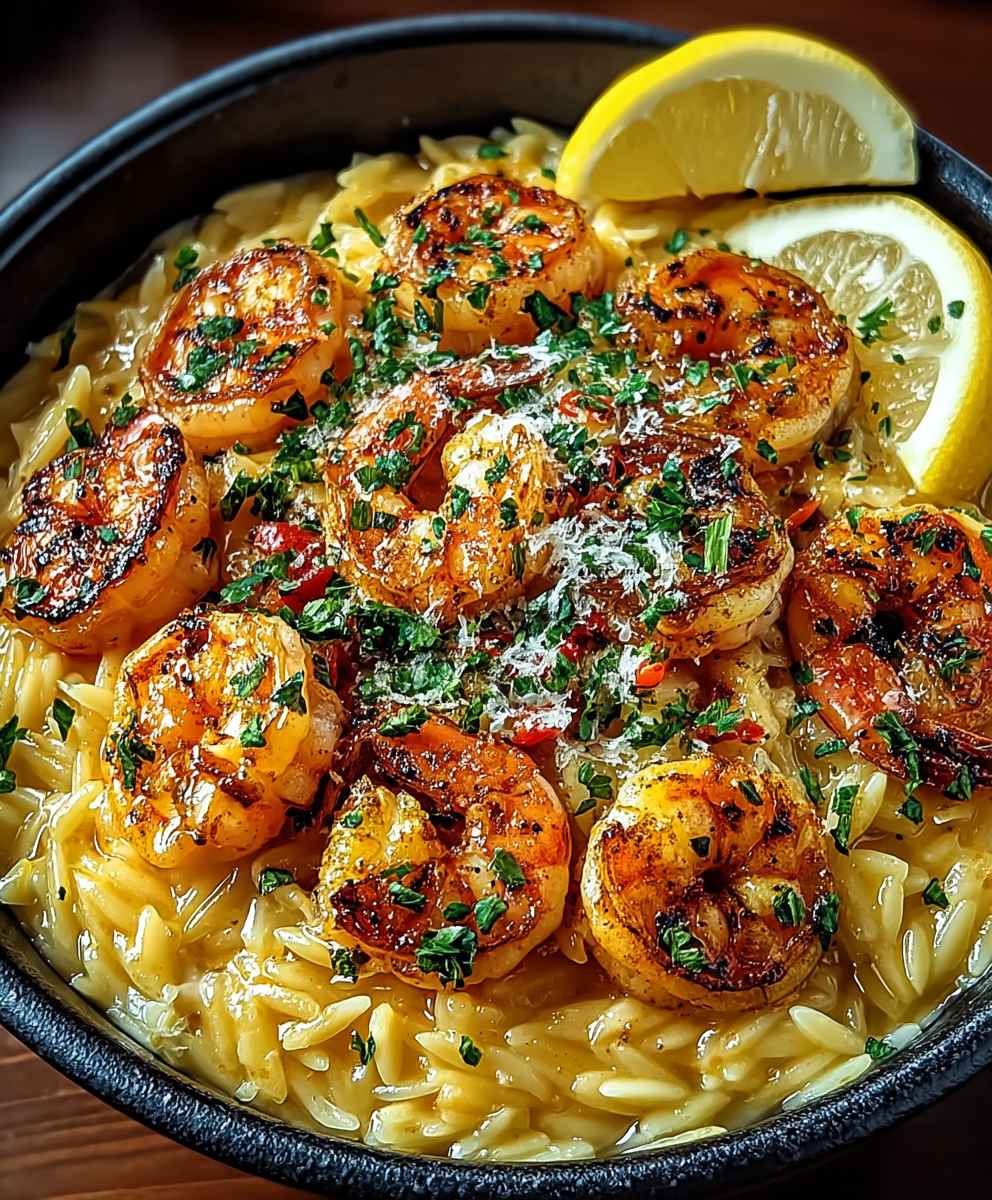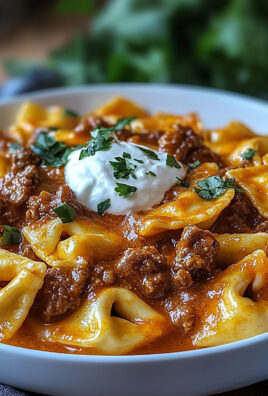Shrimp Orzo Lemon Garlic Sauce: Prepare to embark on a culinary journey that will tantalize your taste buds and leave you craving more! Imagine tender, succulent shrimp nestled amongst perfectly cooked orzo pasta, all bathed in a vibrant, zesty lemon garlic sauce. This isn’t just a meal; it’s an experience.
While the exact origins of this particular combination are modern, the individual components boast rich histories. Orzo, resembling rice but undeniably pasta, has roots in Italian cuisine, offering a delightful alternative to traditional pasta shapes. Shrimp, a global delicacy, has been enjoyed for centuries across various cultures, prized for its delicate flavor and versatility. And the magic of lemon and garlic? A timeless pairing that elevates dishes across the Mediterranean and beyond.
What makes this Shrimp Orzo Lemon Garlic Sauce so irresistible? It’s the symphony of flavors and textures. The bright acidity of the lemon cuts through the richness of the garlic-infused sauce, creating a harmonious balance. The plump shrimp provide a satisfying bite, while the orzo offers a comforting, slightly chewy base. But beyond the taste, it’s the convenience. This dish comes together quickly, making it perfect for a weeknight dinner or an elegant weekend meal. It’s a crowd-pleaser that’s both sophisticated and approachable. I know you’ll love it!
Ingredients:
- 1 pound orzo pasta
- 1.5 pounds large shrimp, peeled and deveined
- 1/4 cup olive oil, extra virgin
- 4 cloves garlic, minced
- 1/2 cup dry white wine (such as Sauvignon Blanc or Pinot Grigio)
- 1 cup chicken broth
- 1/4 cup lemon juice, freshly squeezed
- 2 tablespoons lemon zest, finely grated
- 1/4 cup heavy cream (optional, for extra richness)
- 1/4 cup grated Parmesan cheese, plus more for serving
- 2 tablespoons butter
- 1/4 cup fresh parsley, chopped
- 1/4 teaspoon red pepper flakes (optional, for a little heat)
- Salt and freshly ground black pepper to taste
Cooking the Orzo:
- Bring a large pot of salted water to a rolling boil. This is crucial for preventing the orzo from sticking together. I usually add about a tablespoon of salt per gallon of water.
- Add the orzo pasta to the boiling water and cook according to package directions, usually around 8-10 minutes, or until al dente. Al dente means “to the tooth” in Italian, so you want it to have a slight bite.
- Once the orzo is cooked, drain it well in a colander. Don’t rinse it unless you’re planning on using it in a cold salad. Rinsing removes some of the starch that helps the sauce cling to the pasta.
- Set the drained orzo aside while you prepare the shrimp and sauce. I like to toss it with a little olive oil to prevent it from sticking together while it sits.
Preparing the Shrimp:
- Pat the shrimp dry with paper towels. This is important for getting a good sear on the shrimp. Excess moisture will steam the shrimp instead of browning it.
- Season the shrimp generously with salt and freshly ground black pepper. I also like to add a pinch of garlic powder and onion powder for extra flavor.
Making the Lemon Garlic Sauce:
- Heat the olive oil in a large skillet over medium-high heat. Make sure the skillet is large enough to accommodate all the shrimp without overcrowding. If necessary, cook the shrimp in batches.
- Add the shrimp to the hot skillet in a single layer. Cook for 2-3 minutes per side, or until pink and opaque. Be careful not to overcook the shrimp, as it will become rubbery.
- Remove the shrimp from the skillet and set aside.
- Reduce the heat to medium. Add the minced garlic to the skillet and cook for about 30 seconds, or until fragrant. Be careful not to burn the garlic, as it will become bitter.
- Pour in the white wine and scrape up any browned bits from the bottom of the skillet. These browned bits, called fond, are packed with flavor. Let the wine simmer for 1-2 minutes, or until it has reduced slightly.
- Add the chicken broth and lemon juice to the skillet. Bring to a simmer and cook for 2-3 minutes, or until the sauce has thickened slightly.
- Stir in the lemon zest, Parmesan cheese, and butter. The butter will add richness and shine to the sauce. Stir until the cheese and butter are melted and the sauce is smooth.
- If using, stir in the heavy cream. This will make the sauce even creamier and richer.
- Season the sauce with salt, pepper, and red pepper flakes (if using) to taste.
Combining Everything:
- Add the cooked orzo to the skillet with the lemon garlic sauce. Toss to coat the orzo evenly with the sauce.
- Add the cooked shrimp back to the skillet. Toss gently to combine.
- Stir in the chopped parsley.
- Serve immediately, garnished with extra Parmesan cheese and a sprinkle of red pepper flakes (if desired). I also like to add a lemon wedge for squeezing over the top.
Tips and Variations:
- Shrimp Size: I prefer to use large shrimp for this recipe, but you can use any size you like. Just adjust the cooking time accordingly. Smaller shrimp will cook faster.
- Wine Substitution: If you don’t have white wine on hand, you can substitute with more chicken broth or vegetable broth. You can also add a splash of white wine vinegar for acidity.
- Vegetable Additions: Feel free to add other vegetables to this dish. Some good options include asparagus, spinach, sun-dried tomatoes, and artichoke hearts. Add them to the skillet along with the garlic and cook until tender.
- Spice Level: Adjust the amount of red pepper flakes to your liking. If you don’t like spice, you can omit them altogether.
- Make it Gluten-Free: Use gluten-free orzo pasta to make this dish gluten-free.
- Dairy-Free Option: Omit the Parmesan cheese and heavy cream for a dairy-free version. You can add a tablespoon of nutritional yeast for a cheesy flavor.
- Herbs: Experiment with different herbs. Basil, oregano, and thyme would all be delicious in this dish.
- Lemon Flavor: For an even more intense lemon flavor, add a few drops of lemon extract to the sauce. Be careful not to add too much, as it can be overpowering.
- Storage: Leftovers can be stored in an airtight container in the refrigerator for up to 3 days. Reheat gently in a skillet over medium heat, adding a splash of chicken broth or water if needed.
- Serving Suggestions: This shrimp orzo is delicious on its own, but it also pairs well with a side salad or crusty bread.
Detailed Explanation of Key Steps:
Why Patting the Shrimp Dry is Important:
I can’t stress enough how important it is to pat the shrimp dry before cooking. Excess moisture on the surface of the shrimp will prevent it from browning properly. Instead of searing, the shrimp will steam, resulting in a less flavorful and less appealing texture. Think of it like trying to fry something wet – it just doesn’t work! The dry surface allows for the Maillard reaction to occur, which is the chemical reaction between amino acids and reducing sugars that gives browned food its distinctive flavor. So, grab those paper towels and get patting!
The Importance of Not Overcooking the Shrimp:
Overcooked shrimp is one of the saddest culinary tragedies. It becomes tough, rubbery, and loses its delicate flavor. The key to perfectly cooked shrimp is to watch it closely and remove it from the heat as soon as it turns pink and opaque. The cooking time will vary depending on the size of the shrimp, but it’s usually only a matter of a few minutes per side. Remember, the shrimp will continue to cook slightly even after you remove it from the heat, so it’s better to err on the side of undercooking than overcooking.
Deglazing the Pan for Maximum Flavor:
Deglazing the pan with white wine is a crucial step in creating a flavorful sauce. As the shrimp cooks, it leaves behind browned bits, or fond, on the bottom of the skillet. These browned bits are packed with concentrated flavor, and deglazing the pan allows you to scrape them up and incorporate them into the sauce. The alcohol in the wine helps to dissolve the fond, releasing its deliciousness. If you don’t have white wine, you can use chicken broth or vegetable broth instead, but the wine adds a certain depth of flavor that’s hard to replicate.
Adding the Butter at the End for Richness and Shine:
Adding the butter at the end of the sauce-making process is a technique that chefs use to create a richer, more emulsified sauce. The butter adds a velvety texture and a beautiful shine to the sauce. It also helps to bind the sauce together, preventing it from separating. Make sure the heat is low when you add the butter, as high heat can cause it to burn. Stir the butter in gently until it’s completely melted and incorporated into the sauce.
Why Fresh Lemon Juice and Zest are Essential:
While bottled lemon juice is convenient, it simply can’t compare to the flavor of fresh lemon juice. Fresh lemon juice has a brighter, more vibrant flavor that will really elevate the dish. The lemon zest adds another layer of lemon flavor, as the zest contains the lemon’s essential oils. When zesting the lemon, be careful not to grate the white pith underneath the zest, as it can be bitter. Use a microplane or a fine grater to get the best results.
Conclusion:
This Shrimp Orzo with Lemon Garlic Sauce isn’t just another weeknight dinner; it’s a vibrant, flavorful experience that’s surprisingly easy to pull off. From the perfectly cooked orzo, each grain infused with the bright lemon and savory garlic, to the succulent shrimp that practically melts in your mouth, this dish is a symphony of textures and tastes that will leave you craving more. I truly believe this recipe is a must-try because it delivers restaurant-quality flavor without requiring hours in the kitchen. It’s the kind of meal that makes you feel good, both while you’re eating it and knowing you created something so delicious with minimal effort.
But the best part? It’s incredibly versatile! While I’ve presented my favorite version, feel free to get creative and adapt it to your own preferences. For a spicier kick, add a pinch of red pepper flakes to the garlic and lemon sauce. If you’re not a fan of shrimp, grilled chicken or even chickpeas would be fantastic substitutes. Looking for a vegetarian option? Simply omit the shrimp and add some sautéed zucchini, bell peppers, and spinach for a burst of fresh, colorful goodness.
Serving Suggestions and Variations:
* As a Main Course: Serve a generous portion of the Shrimp Orzo with Lemon Garlic Sauce as a satisfying and complete meal. A simple side salad with a light vinaigrette complements the richness of the dish perfectly.
* As a Side Dish: This orzo also makes a wonderful side dish to grilled fish, chicken, or steak. The bright lemon flavor cuts through the richness of the protein, creating a balanced and delicious meal.
* Cold Pasta Salad: Let the orzo cool completely and toss it with chopped tomatoes, cucumbers, olives, and feta cheese for a refreshing cold pasta salad that’s perfect for picnics or potlucks.
* Creamy Version: For a richer, creamier sauce, stir in a dollop of mascarpone cheese or heavy cream at the end of cooking. This adds a luxurious touch that’s perfect for a special occasion.
* Herb Variations: Experiment with different herbs to customize the flavor profile. Fresh basil, parsley, or dill all work beautifully in this dish.
I’m so excited for you to try this recipe and experience the magic of Shrimp Orzo with Lemon Garlic Sauce for yourself. It’s a dish that’s sure to become a staple in your kitchen, and I can’t wait to hear what you think!
So, go ahead, grab your ingredients, and get cooking! Don’t be afraid to experiment and make it your own. And most importantly, please share your creations with me! I’d love to see your photos and hear about any variations you try. You can tag me on social media or leave a comment below. Happy cooking, and I hope you enjoy this delightful and easy-to-make meal as much as I do! I am confident this will become one of your favorite recipes.
Shrimp Orzo Lemon Garlic Sauce: A Delicious & Easy Recipe
Quick and easy pasta dish with fresh flavors. Tender shrimp, perfectly cooked orzo, and a bright lemon garlic sauce make this a weeknight winner!
Ingredients
Instructions
Recipe Notes
- Shrimp Size: Adjust cooking time based on shrimp size.
- Wine Substitution: Use more chicken broth or vegetable broth. Add a splash of white wine vinegar for acidity.
- Vegetable Additions: Asparagus, spinach, sun-dried tomatoes, and artichoke hearts are great additions.
- Spice Level: Adjust red pepper flakes to your liking.
- Gluten-Free: Use gluten-free orzo.
- Dairy-Free: Omit Parmesan and heavy cream. Add nutritional yeast for cheesy flavor.
- Herbs: Basil, oregano, and thyme are delicious alternatives.
- Lemon Flavor: Add a few drops of lemon extract for a more intense flavor.
- Storage: Store leftovers in an airtight container in the refrigerator for up to 3 days. Reheat gently in a skillet over medium heat, adding a splash of chicken broth or water if needed.
- Serving Suggestions: Serve with a side salad or crusty bread.





Leave a Comment